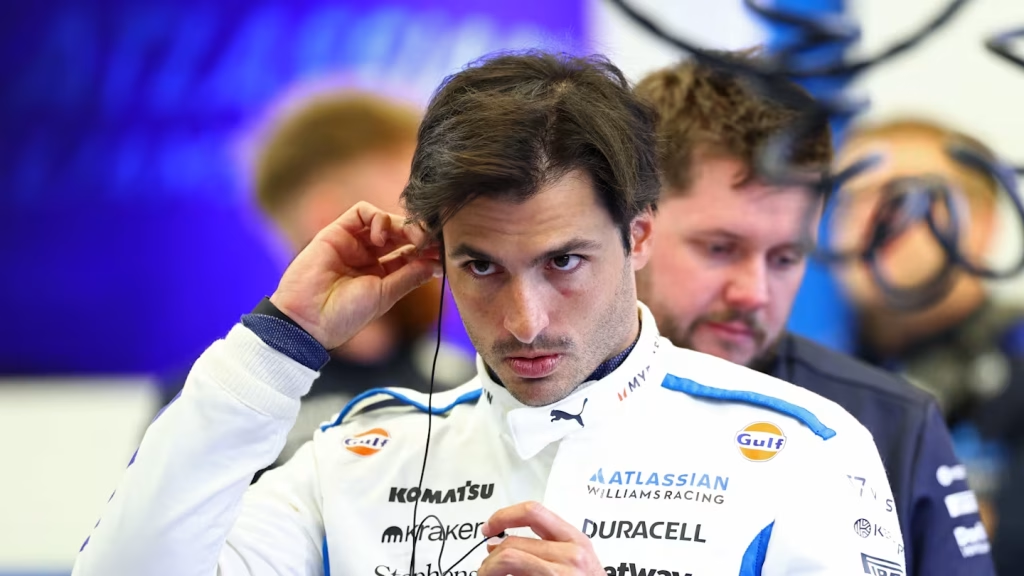Formula 1 driver Carlos Sainz, in his role as a director of the Grand Prix Drivers’ Association (GPDA), has issued an urgent call for modifications to the sport’s Drag Reduction System (DRS) following a high-speed crash involving Alpine rookie Jack Doohan during practice at the Japanese Grand Prix. The incident, which occurred on Friday at the Suzuka Circuit, has reignited concerns over the safety of the DRS mechanism, particularly in unique track configurations like Suzuka’s challenging layout.
The dramatic shunt saw Doohan lose control of his Alpine A525 at approximately 185 mph (300 kph) as he entered Turn 1 with his DRS flap open, a decision he later admitted was deliberate based on simulator habits. The resulting loss of rear downforce sent the car careening into the barriers, causing significant damage but fortunately leaving the 22-year-old Australian unharmed. The crash prompted immediate red flags in Free Practice 2 and has since sparked a broader discussion about the need for enhanced safety measures in Formula 1’s overtaking aid system.
Speaking to the media ahead of Sunday’s race, Sainz emphasized that the current DRS setup, which requires manual deactivation in certain scenarios, poses an unnecessary risk. “Safety is still the main priority with these cars, especially with the speeds we’re doing,” Sainz said. “In corners where a DRS zone leads into a non-braking zone—like here at Suzuka—there should be an automatic cut-off system in place. We can’t rely solely on drivers remembering to close it, especially under pressure or in unpredictable conditions.”
Suzuka’s unique figure-eight design exacerbates the issue, as the DRS zone along the pit straight feeds directly into the high-speed Turn 1, a corner that drivers often take flat-out or with minimal braking. Unlike most circuits, where braking automatically closes the DRS flap, Suzuka requires drivers to manually disengage the system if they lift off the throttle rather than brake. Doohan’s crash highlighted this vulnerability, with Alpine later confirming that a “misjudgement” in failing to close the DRS was the root cause.
Sainz’s proposal for an automatic deactivation system has gained traction among drivers, many of whom have long expressed unease about the DRS’s limitations. “Jack’s incident was a clear example,” Sainz noted. “He’s lucky to walk away from that, but it’s a reminder that we’re pushing these cars to the limit. We need the technology to match the demands of the tracks we race on.”
The FIA, Formula 1’s governing body, already employs safety measures to mitigate DRS-related risks, such as restricting its use to designated zones and linking automatic closure to braking inputs. However, Sainz and other drivers argue that these measures fall short at circuits like Suzuka, where the transition from a DRS zone to a high-speed corner leaves little margin for error. Posts on X reflect growing sentiment among fans and analysts that the sport must adapt, with many echoing Sainz’s call for change.
The timing of Sainz’s advocacy adds pressure to an already eventful weekend at Suzuka. The Spaniard, now driving for Williams, faced his own challenges during qualifying on Saturday, receiving a three-place grid penalty for impeding Ferrari’s Lewis Hamilton in Q2. Starting from P15, Sainz will have a steep climb in Sunday’s race, but his focus remains on the bigger picture of driver safety.
As Max Verstappen claimed victory in the Japanese Grand Prix, leading McLaren’s Lando Norris and Oscar Piastri across the line, the paddock buzzed with discussions about the DRS debate. While the FIA has yet to respond formally to Sainz’s proposal, the incident and subsequent reaction suggest that changes could be on the horizon. For now, the sport’s stakeholders—drivers, teams, and officials—face a critical juncture in balancing performance with safety as Formula 1 continues to evolve.

